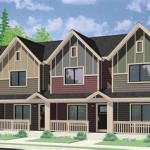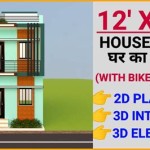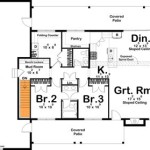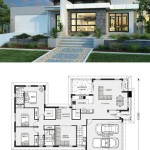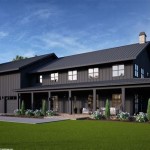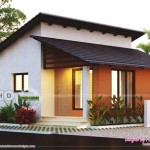Split Level Home Floor Plans: A Comprehensive Guide
Split-level homes have become increasingly popular due to their unique ability to provide ample space and functionality while maintaining a compact footprint. These homes feature multiple "split" levels that are typically arranged with a series of half-flights of stairs. The result is a home that feels more spacious than it actually is, with differentiated areas for various activities.
Benefits of Split Level Home Floor Plans
Split level home floor plans offer several advantages over traditional floor plans. These include:
- Increased space: The multiple levels of a split-level home allow for more square footage without significantly increasing the home's footprint.
- Functional zoning: The different levels can be easily designated for specific functions, such as a living area, sleeping area, or work area.
- Privacy: The separation of levels can provide a sense of privacy and quiet for different rooms.
- Indoor-outdoor connection: Split-level homes often feature ground-level access to a backyard or patio, creating a seamless connection between indoor and outdoor spaces.
Types of Split Level Home Floor Plans
There are several variations of split-level home floor plans, each offering its own unique advantages. Common types include:
- Tri-level: This type has three distinct levels, typically with a living area on the main level, bedrooms on the upper level, and a family room or garage on the lower level.
- Bi-level: This type has two main levels, with the upper level typically containing the living area and bedrooms, while the lower level houses the kitchen, dining area, and other spaces.
- Raised ranch: This type is similar to a bi-level, but the upper level is slightly elevated to provide a view over the lower level.
Design Considerations for Split Level Homes
When designing a split level home floor plan, it is essential to consider the following factors:
- Flow: The layout of the different levels should ensure a smooth and logical flow between rooms.
- Natural light: Large windows and skylights can be used to maximize natural light penetration into all levels of the home.
- Stair placement: The location and design of stairs should be carefully considered to avoid awkward or unsafe access between levels.
- Storage: Built-in storage solutions can be incorporated into the design to maximize space utilization.
Conclusion
Split level home floor plans offer a unique and practical solution for creating spacious and functional living spaces. By carefully considering design considerations such as flow, natural light, stair placement, and storage, homeowners can create a customized home that meets their specific needs. With its versatility and functional zoning, a split level home can provide the perfect balance of space, privacy, and indoor-outdoor living.
Split Level Homes Designs G J Gardner

4 Bedroom Split Level House Plan 2136 Sq Ft 2 Bathroom

Split Level House Plans And Foyer Floor

Familyhomeplans Com Plan Number 45253 Order Code 01web Split Level House Plans Modular Home Floor

Split Level House Plans And Foyer Floor

House Design Plans Idea 7x11 5 With 3 Bedrooms S Split Level Floor Tri

Split Level House Plans Home Design 3266

Modern Split Level House Plans And Multi Floor Plan Designs

Split Level Traditional Home Plan With Mudroom 22171sl Architectural Designs House Plans

Plan 8963ah Split Level Home House Remodeling Plans Floor

